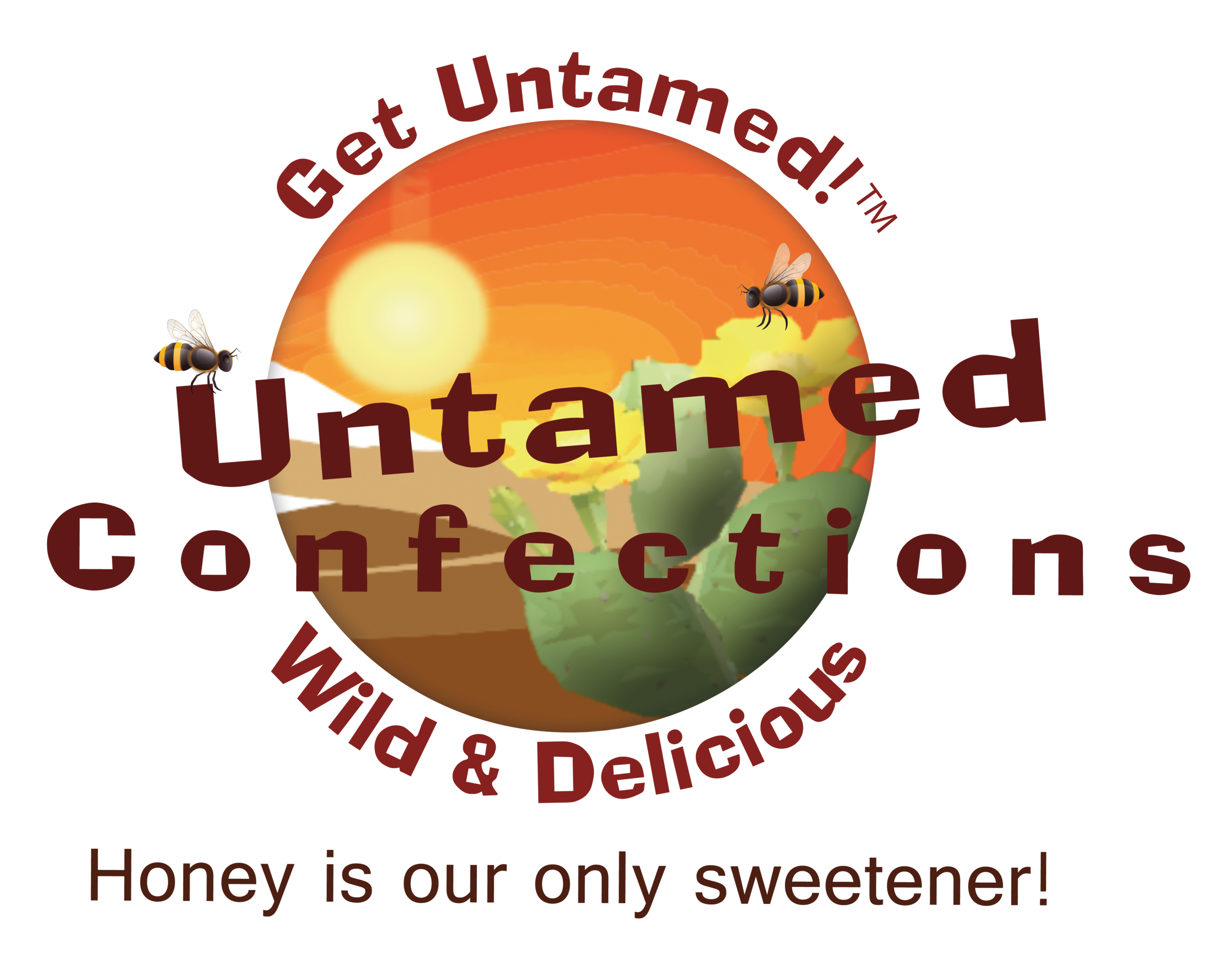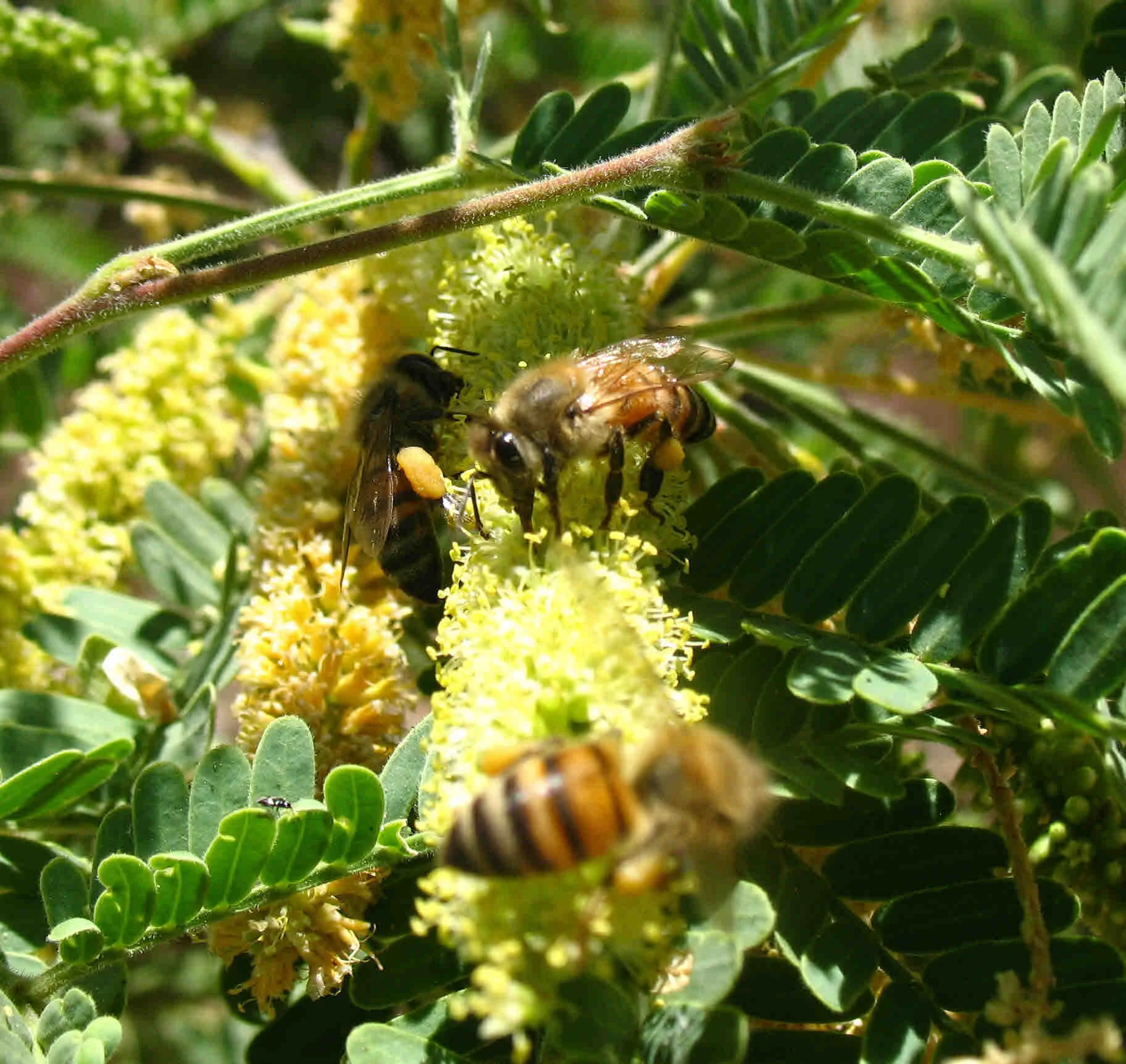Leave it alone gardening for a pollinator friendly environment
If you are concerned about the pollinators, we are as well. The decline of the pollinators is a reality.
"For much of the past 10 years, beekeepers, primarily in the United States and Europe, have been reporting annual hive losses of 30 percent or higher, substantially more than is considered normal or sustainable. But this winter, many U.S. beekeepers experienced losses of 40 to 50 percent or more" Elizabeth Grossman - Yale Environment 360
Mesquite Trees our back yard - Photograph by Tom Williams
Here's what you can do to help:
Let it go Natural
Lawns and gardens that provide food, nutrition, and shelter for pollinators and other critters can still be gorgeous. Tom is really good at letting our property enjoy the natural wildflowers. So instead of weeding out the natural flowers let your yard go!
Nourish the Native Plants
If you want to help the pollinators, then plant what they need. The plants you find at nurseries and your local hardware store may have pollen, nectar, and even scent bred out of them. So do your research into which plants work best in your environment. The Xerces Society takes out the guesswork and provides copious information on what the pollinators love in the southwest region. If you don't live in the southwest, they have info for your neck of the U.S. They provide the name, dates of blooms and where you can purchase them. So easy!
Variety is food for life
Bees and butterflies love all shapes and colors that will bloom from early spring to late fall. Notice what the bees and butterflies are attracted to in your region. Our bees love Palo Verde, Mesquite, Catclaw, Ocotillo, and many more in our area. If planting try clustering groups of trees and plants together to entice the pollinators.
STOP it with the pesticides already!
The number one threat to pollinators are the chemicals that are used in yards such as neonicotinoid (or neonic) pesticides. Not only are they most toxic to bees, butterflies, and other insects, but they're also systemic. When applied, these poisons make their way throughout the entire plant—including the pollen and nectar. This not only compromises the food source for the pollinators, but our health as well. That is why we have stringent requirements and only work with bee keepers that place their hives out in the wild Sonoran Desert, with plenty of indigenous plants and trees for the bees to enjoy and away from populated areas.
There are plenty of alternatives for pesticides - read up on them in the Pesticide Guides at The Xerces Society website.
Think twice before you buy that plant
According to the nonprofit group Friends of the Earth , a majority of plants contain neonicotiniods that you purchase at your local garden supply. Purchase plants or seeds that aren't pretreated with pesticides. And remember to read the fine print: If a plant is marked “protected,” that may mean it’s chemically treated. Do your research.
Smaller nurseries that specialize in organic gardening will likely be your best bet. And remember, supply equals demand, i.e. the more you ask for pollinator-safe plants, the more likely stores will start stocking them.
Remember water
We are in a dry climate so we are mentioning water once again. We have a birdbath and it is used by the bees. They drink and fly up in a spiral and then in the direction of the hive.
It is amazing to watch and admire the beauty of the dance of the honeybee. And the joy of knowing that they are sharing the water with the hive.
So, if you already have a birdbath, you're good to go. Remember to provide some pebbles or rocks in the dish so pollinators won’t drown.
We refresh our standing water often to prevent unwanted guests...the mosquito. And everyone loves fresh water!
If you have a pool, look for ways to create a better no-chlorine pool alternative, some say the chlorine smell may attract the bees. But it is hard to deter a bee from any water source. So, if you have your bird bath in place and the bees still are attracted to the pool, why not give them better drinking water! Here is an article from The New York Times about one alternative from Europe.
Spread the word
Also, talk with people about alternatives...spread the word. It creates a domino affect. If you live in a neighborhood, inform your neighbor. Stay updated on new developments and take action in your part of the world.
Well, now that you know what to do in your yard for the pollinators, let's enjoy some of the benefits they offer us with this delicious refreshing recipe.
Citrus Green Smoothie
Smoothies are getting really popular around the world these days; a great nutritious and delicious way to start or give a boost to your day. The best thing about these beverages is that you can make as many combinations as you can think of. But I love a light citrus smoothie so I am going to share one of my favorites.
It is absolutely easy to create a healthy smoothie. Combine your favorite greens, fruits, protein powders if you like them, and a natural sweetener like our Sonoran Desert Wildflower Honey. There you go, a green smoothie that will give you plenty vitamins and nutrients.
Ingredients:
1 cup of water (we use reverse osmosis)
½ cup of ice, optional
2 cups of organic spinach
1 organic orange, peeled
1 organic grapefruit, peeled
1 organic lemon
1 ½ tbsp of Sonoran Desert Wildflower Honey (or more if you want a sweeter smoothie)
Instructions:
Place water and spinach in a blender. Mix for 10 seconds.
Add the orange and grapefruit, both previously peeled and sliced. Also, incorporate the zest and juice of the lemon. Blend for 5 – 10 seconds more.
Finally add the Sonoran Desert Wildflower Honey and ice. Blend very well until smooth, around 15 seconds more.
Serve into two tall glasses with some extra ice, if desired.


